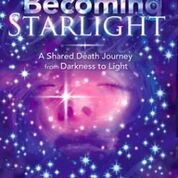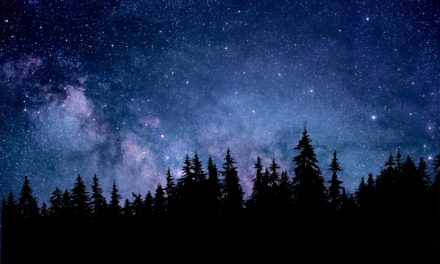A shared death experience (SDE) is said to be a glimpse of the afterlife near the time of or during another person’s death. Sharon Prentice writes about how that experience changed her spiritual outlook.

Heaven. There are many different words for it in many different languages. And each day, it’s a “place” that’s referred to more than any other in the world. Why? Every single race, religion, ethnicity, and culture—members of each one believe in the concept of Heaven. Religious scholars and philosophers have debated, argued, and fought over the very nature of Heaven since time immemorial and they have written reams and reams of papers about it and stockpiled book after book on library shelves for millennia.
But it’s not the conversations or writings of the religious scholars or philosophers that touch the true nature of “that place.” It’s the conversations that take place in the hospices, hospitals, ICU’s and funerals of the world that take us into the soul of humanity and, therefore –into Heaven. It’s in times of great personal trauma that many of these discussions take place. And, sometimes, these private moments can become very heated due to the stress and fear that exist in the trying moments before the death of a loved one. Once the word “Heaven” is spoken out loud, the underlying, unacknowledged, unspoken word that goes with it is death. Fear that death is near–especially in the waiting rooms of the ICU–prompts exchanges that are not normally heard in everyday family life.
When “the end” is near, people shy away from using the word “death”; their conversation will, instead, turn to the “place” where their loved one “is going” and to each person’s individual interpretation of exactly what and where Heaven is–and everyone has their own “truth.” Listening to, and being part of these conversations, is both joyous and heart wrenching as families try to come to terms with exactly “where” their loved one will be after they die. This conversation is repeated countless times, every single day, all over the globe.
The conflict begins the very minute someone questions the interpretation of another. In these moments of great tragedy, having one’s viewpoint understood and accepted as truth–the only truth–is vitally important to each person’s peace of mind. Therein lies the problem. The discussion turns to debate–then to all-out disagreement.
I understand the conflict. Over the years, I have shared my SDE with many friends, colleagues, and mentors, and my explanations and descriptions have sometimes caused heated debate among them. I have spoken to individuals from all walks of life, from all the great religions of the world, from every background and school of thought, and every one of them had their own version of what “truth” should “be” or “is.” While all their “truths” were different, they did have a unifying thread–a belief in an afterlife. “Heaven” and “Hell” were central to every debate and the descriptions of these “places” were similar in both nature and belief.
In the course of these debates and conversations, I have been asked to explain “where” I was taken, what I meant by “I became Starlight,” and to describe exactly what “God” looked like. It is so very difficult to accurately relay my experience because I must rely on “words.” To use words such as “majestic, magnificent, purity defined, peaceful, still, home” dulls the experience because of the mere fact that labeling it–using words to describe the indescribable–just doesn’t do the SDE justice. To characterize the face of God, the touch of God, is tantamount to explaining perfection itself–how can it be done? How do you depict an emanation of love and joy combined with otherworldly purity? How do you describe an ethereal form that consists of pure light? The “how” lies in the experience itself as given to you by God Himself–His face, His thoughts, His Word engraved upon your heart–how do you give voice to that feeling?
The “how” lies hidden in the vision, the “feeling” of pure Spirit–the soul must feel its way through to see perfection without being polluted by the scripts we grew up identifying with and falling victim to. “God looked like love I have never experienced before” has always been my answer. There are some feelings and thoughts that can never be expressed–words don’t exist to describe them. Our own humanity puts locks on the words felt in the Soul. The physicality of God’s appearance—it simply wasn’t important. I felt absolutely no curiosity about it–His touch was just too all-consuming and comforting to think of anything else. Perhaps one day, someone will invent a word that accurately depicts “the pure light that is love” that will get us one step closer to seeing His perfection.
Once the head shaking stops from my lack of a physical description, the conversation turns to “where” was I? Most organized religion tells us that God is “separate” from us, that He lives somewhere “out there,” above the clouds in a place called Heaven. Religion teaches us that God is the creator and final arbiter of the rights and wrongs of living and that we all will surely answer to Him for all our wrong doings. And just as we’ve been told who and what God is, we’ve also been told what “heaven” is, in descriptive terms that everyone can visualize. Heaven is a specific place, the likes of which there is no equal. It is an “other” world, out there somewhere, filled with everything wonderful and beautiful, full of creature comforts that we only dream about. Mansions line golden streets encrusted with pearls and diamonds, and everyone has everything they ever wanted–and everyone who was the best “good little boy or girl” has even bigger and better things than those who weren’t quite as good in this life. We earn that mansion on that particular street in that particular neighborhood by the things we do or believe or by the things we don’t do or don’t believe while living on this earth. Sounds like a bigger and better version of life here, doesn’t it? I fully accepted that version, that description of Heaven given to me as a child. The innocence of childhood demands “pictures” we can understand. Adjectives that paint a picture of a human paradise comfort and console us when we think of death — ours or anyone else’s.
But that is not what I found in “that place” among my stars. Was there physicality, a form, a space–a specific place that could be described? I can’t say there was! What I found, and felt, instead, in the place where I was held, was magnificence itself: Pure Starlight–and God Himself. And the most amazing surprise of all–I found the “me” as God intended me to be from the moment He formed me in my mother’s womb–before this world got ahold of me and slapped labels on me that told me who to “be” and what to believe. But in “that place,” I found myself as a magnificent extension of God. My answer to the question, “What does God look like?” has always been the same: to describe God, I would be describing my own Soul. And to describe “that place” requires a complete letting go of everything that any logic and human reasoning would dictate.
The very essence of God, of Heaven, was in and of that Starlight. I discovered–no, I just knew–that there is nowhere that God is not. He is in and of everything that has ever existed. There is nothing that He is not. There is no place that He is not. If it exists, it is a part of Him–His thoughts created everything, including every one of us. We exist purely because he thought of each one of us. We are the physical forms of His thoughts. We are his creations–part of a whole that we can’t perceive. We are all intricately combined as one thought of God but gloriously separate as individuals for some reason unknown to us–but known to Him from the moment He gave each of us life.

 Excerpted from Becoming Starlight: A Shared Death Journey from Darkness to Light by Sharon Prentice, PhD. Copyright © 2018 by Sharon Prentice.
Excerpted from Becoming Starlight: A Shared Death Journey from Darkness to Light by Sharon Prentice, PhD. Copyright © 2018 by Sharon Prentice.






